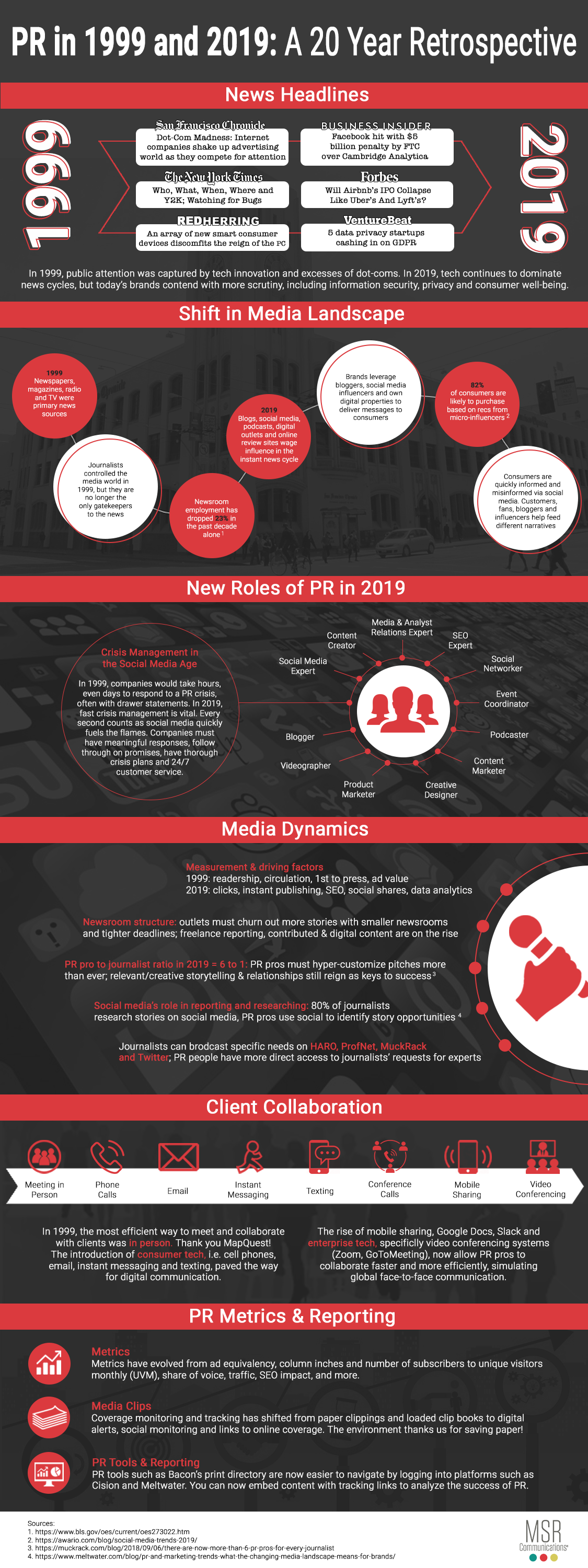In the past 20 years, evolving technology and consumer consumption habits have combined to drive dramatic shifts in media and marketing, which in turn has required new approaches to PR. Back in 1999, the impact of the €œinformation super highway€ was being felt in all quarters, yet print newspapers, magazines, radio and TV were still the preferred sources for news. Today in the U.S., while TV remains the primary source for news, social media has surpassed print (according to the Pew Research Center), adding new layers of influence in the form of bloggers, podcasters, tweeters, consumer commenters and reviewers, and other social networkers. Consumers can speak directly to brands and more brands can speak directly to them. But with this swing in influence also comes less reliability and responsibility in terms of how information is sourced and disseminated. For public relations professionals, it means learning how to capitalize on new opportunities while sidestepping the many landmines that can erode brand reputation in a flash. This has mandated the faster, more open and honest approach to crisis management that the public has always deserved. In 1999, companies would sometimes take days to respond to a crisis, often hoping it would simply go away. In today's social media driven landscape, every second of inaction adds more fuel to the fire. But with thorough advanced planning, constant monitoring and fast commensurate reaction, brands can quickly overcome a crisis and even emerge stronger than ever. Public relations professionals are also required to wear many more hats than they did 20 years ago. In addition to bread-and-butter media and analyst relations, many of us have expanded our expertise to include content marketing, digital marketing, website design and so much more. In between pitching and staffing reporter interviews, we're serving clients by churning out blog posts, producing podcasts, and creating videos for YouTube. Journalists, similarly, have become incredibly multifaceted to handle the new, constant demand for content in all its forms. With newsrooms shrinking, they must file more stories and deal with tighter deadlines. For some editors and reporters, this means relying more on PR and other external sources for contributed content and other information and support. And while a journalist's success depends in no small measure on clicks and social shares, the bar for PR involvement must still match the high level of journalistic integrity that legitimate news sources still adhere to. If anything, PR professionals must hyper-customize their pitches and outreach to maintain reporter relationships like never before to help reporters create unique stories that are relevant to their readers, viewers and listeners. But PR, journalism and marketing have changed in so many other ways. Take a look at our infographic below for more, and enjoy your walk down memory lane!

Mary Shank RockmanMark Shank Rockman is CEO and principal of MSR Communications, a public engagement firm offering media relations, analyst relations and influencer relations, content marketing, celebrity partnerships, digital marketing, speaking engagements and crisis communication services.